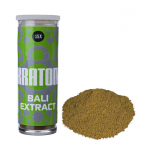2-Methylmethcathinone Research Chemical Review (2-MMC)

2-Methylmethcathinone (also known as 2-MMC) is a synthetic substance derived from cathinone, which comes from the khat shrub in Africa. Though it’s a cathinone, the effects are said to be like that of an amphetamine. Users may recreationally self-administer 2-methylmethcathinone to induce legal highs.
Keep reading for a complete research chemical review of 2-MMC, including general information, history, dosage & administration, other user reviews, and potential side effects.
General Information on 2-Methylmethcathinone
2-Methylmethcathinone is what’s known as a substituted cathinone. It’s derived from cathinone and synthesized into an ingestible form for medicinal or recreational use.
2-MMC typically comes in crystal or powder form, but can also be found in capsule or pill form. Users can also encapsulate doses at home using powder and the capsule of their choice. In powder or crystal form, it’s an off-white or pale yellow color.
It can be identified in both blood and urine samples. Because the substance is relatively new compared to similar drugs, it’s still unclear whether or not it can be found in hair samples.
History of 2-MMC
2-Methylmethcathinone was first recognized around 2014 in Sweden and quickly spread to other parts of Europe. It’s believed to have originally been synthesized in Sweden, but there is insufficient evidence to determine the true origin of 2-MMC. There are records of the synthesization of other cathinone substitutes as early as the 1920s.
It’s closely related to more well-known recreational stimulants like 3-MMC (3-methylmethcathinone) and 4-MMC (4-methylmethcathinone or mephedrone, also known as M-CAT). Both 3-MMC and 4-MMC have been identified as a controlled substance in several countries–including the United States, the United Kingdom, and China–but 2-MMC is relatively newer and less well-known, meaning many places haven’t yet passed specific legislation outlawing the possession or use of 2-MMC.
Some states and countries use umbrella laws to criminalize similar substances within the synthetic amphetamine category, so look up your local ordinances to ensure you’re partaking in a legal high.
Today, it’s available almost globally via online suppliers and individual distributors. Different forms of 2-MMC are often labeled as plant fertilizers or research chemicals.
Dosage and Administration
Substance use, even with legal drugs like 2-MMC, should be approached cautiously with an understanding of all risks and benefits involved.
The effects of 2-methylmethcathinone can differ based on:
- the dosage amount and frequency
- the user’s health, height, and weight
- the user’s previous experience with the substance
- additional substances used at the same time, including prescription medications
- the method of administration
- the user’s tolerance of this or similar substances
When administering any substance, use a test kit or strips to ensure the legitimacy of the drug and follow harm reduction protocols like sober supervision for the best outcome.
It’s recommended to start with a small dose initially and then increase the dosage as you become more familiar with the effects and the way your body reacts to 2-MMC.
15-50 mg of 2-MMC per 100 lbs. of body weight is a typical dose for administration via the following methods:
Oral administration
2-methylmethcathinone can be administered orally in capsule or pill form, mixed with a drinking liquid, or ingested via a process called “bombing” or “parachuting”. In this process, the crystals are crushed, wrapped in a single layer of tissue or rolling paper, and swallowed.
Nasal Insufflation
In powder form, 2-MMC can be insufflated nasally (known colloquially as “snorting”) for a more rapid onset of effects, close to around 15 minutes from the time the initial dose is administered. Some users find this method to be painful and experience an intense burning sensation, but many find that the pain subsides quickly.
Vaporization
2-MMC can also be vaporized or smoked and inhaled using a vaporizer or pipe. It’s not recommended to attempt to roll 2-MMC using cigarette papers, as the powder or crystals will melt before they can sufficiently vaporize.
Redosing
Some users prefer to redose when they start to feel the effects wear off. If you’re experiencing negative side effects, it’s not recommended to redose. One common side effect of 2-MMC is an intense urge to redose, so exercise caution when making the choice to continue with a subsequent administration. When redosing, aim to use an equal or lesser amount than the initial dose until you know how the drug reacts in your system.
User 2-Methylmethcathinone (2-MMC) Reviews
Research chemical reviews are often self-reported and should be taken anecdotally, not as evidence or fact. The timelines and effects mentioned here are an approximation based on the self-reported experience of other users.
Onset of Effects
Depending on the method of administration, expect effects to set in anywhere from 5-20 minutes. Some users report feeling the effects come on almost instantaneously, whereas others report feeling them start to gradually come on and then rapidly intensify.
Productivity
Users typically report high levels of focus, energy, increased alertness, and motivation to complete work and other tasks while under the influence of 2-MMC, comparable to prescription Adderall. This experience can last anywhere from 1-4 hours, depending on the dosage and frequency.
Euphoria
Many users experience mild to intense feelings of euphoria as a result of administering 2-methylmethcathinone. This can also sometimes be experienced as an overwhelming feeling of peace and comfort, or feelings of empathy or friendliness toward others. This phase lasts approximately 1-4 hours depending on the dosage and frequency.
Anticlimax
The anticlimax or “comedown” for 2-MMC is reported to be mild compared to other amphetamines, but results may vary depending on the dosage, frequency, and user. Some may experience low mood, irritability or anger, headaches, nausea, and/or drowsiness. The anticlimax may begin to set in within 1-2 hours after the initial dose if no redose is administered.
Potential Side Effects of 2-MMC
As with any substance, there are potential side effects of 2-methylmethcathinone. Some of the potential side effects include (but aren’t limited to):
- Fever
- Dizziness
- Dry mouth
- Reduced appetite
- Sweating
- Hyperthermia
- Increased levels of agitation
- Vomiting
- Tremor
- Chest pain
- Hypertension
- Seizures
- Paranoia
- Hallucinations
- Death
If you experience severe negative effects, contact your local emergency department and let them know the dosage and frequency of 2-MMC that you have self-administered to prevent reactions with other drugs they may prescribe to prevent further harm.














